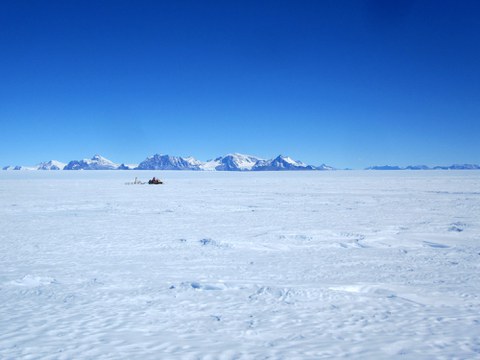Jun 14, 2018
Antarctic Ice Sheet mass loss has increased
An international study involving scientists from TU Dresden delivers comprehensive facts
Mass losses of the Antarctic Ice Sheet have increased global sea level by 7.6 mm since 1992, with 40% of this rise (3.0 mm) coming in the last five years alone. In West Antarctica, mass losses today amount to about 160 billion tons per year.
The findings are from a major climate assessment known as the Ice Sheet Mass Balance Inter-comparison Exercise (IMBIE), and are published on 14 June in Nature. It is the most complete picture of Antarctic ice sheet change to date - 84 scientists from 44 institutions combined 24 satellite surveys to produce the assessment.
Martin Horwath, professor for Geodetic Earth System Research at TU Dresden, and two members of his working group, Ludwig Schröder and Andreas Groh, contributed significantly to this study.
Ludwig Schröder explained: "Altimeter satellites measure the surface elevation of the ice sheet. We analyzed data from five consecutive satellite missions in order to derive changes over the full 25-year period from 1992 to 2017." Schröder was one of just two contributors to deliver such a comprehensive dataset.
Andreas Groh added: "Analyzing tiny changes of Earth's gravitational attraction is another method to infer ice mass changes. We analyzed data from the GRACE satellite mission. GRACE stands for Gravity Recovery and Climate Experiment. The results, together with thorough uncertainty assessments, have been accessible through an open data portal for a while. They were now incorporated into the study." The portal is available under data1.geo.tu-dresden.de.
One of the two lead authors of the study, Dr. Erik Ivins at NASA Jet Propulsion Laboratory in Pasadena, California, currently being at a research stay at Prof. Horwath's institute at TU Dresden, commented the study: “The added duration of the observing period, the larger pool of participants, various refinements in our observing capability and an improved ability to assess both inherent and interpretive uncertainties, each contribute to making this the most robust study of ice mass balance of Antarctica to date.”
West Antarctica experienced the largest change with ice losses rising from 53 billion tonnes per year in the 1990ies to 159 billion tonnes per year since 2012. Most of this came from the acceleration of the huge Pine Island and Thwaites Glaciers. At the northern tip of the Antarctic Peninsula glacier acceleration following ice shelf collapse caused an increase in ice mass loss from seven billion tonnes per year in the 1990ies to 33 billion tonnes per year in the 2010s. For East Antarctica the results are subject to larger uncertainties but indicate a state close to balance over the last 25 years.
A mass of one billion tonnes corresponds to a cubic kilometer of water. If continental ice sheets lose 100 billion tonnes of mass mean sea level will rise by 0.28 mm.
Publication: The paper ‘Mass balance of the Antarctic ice sheet from 1992 to 2017’ by The IMBIE Team is published in Nature on 14 June, DOI: 10.1038/s41586-018-0179-y.
Media inquiries:
Prof. Dr.-Ing. Martin Horwath
TU Dresden
Institute of Planetary Geodesy
Geodetic Earth System Research
Tel.: +49 (0) 351 463-37582

